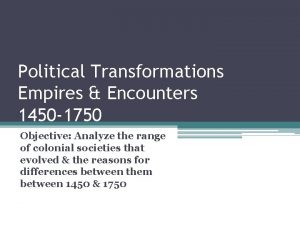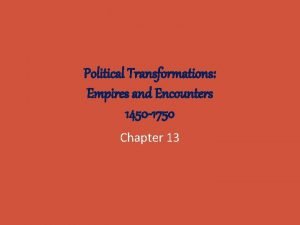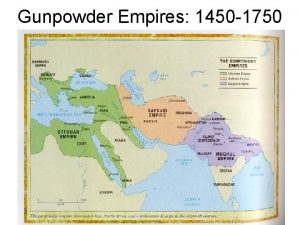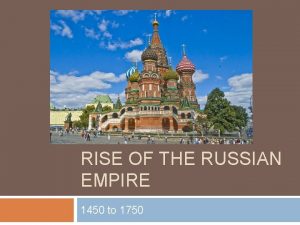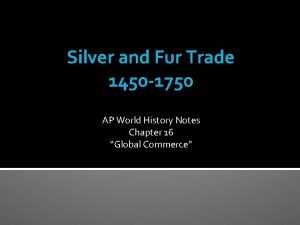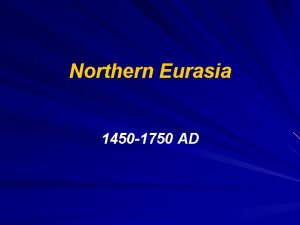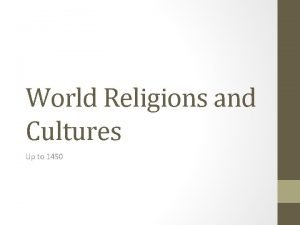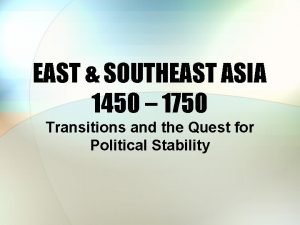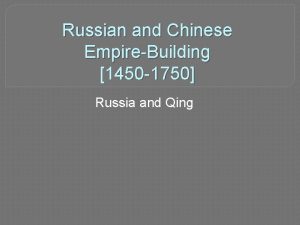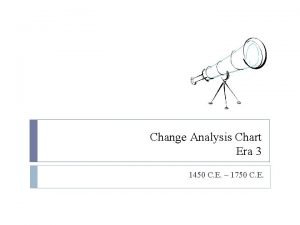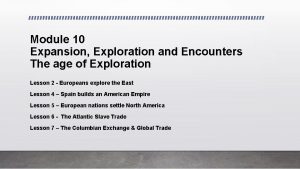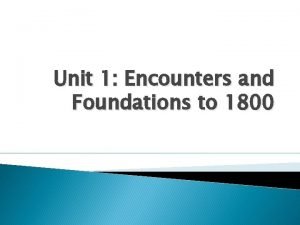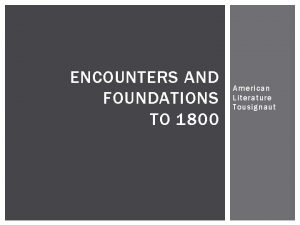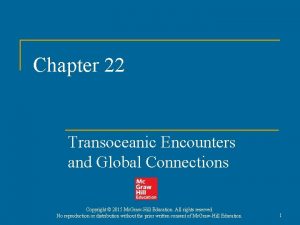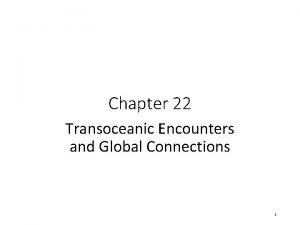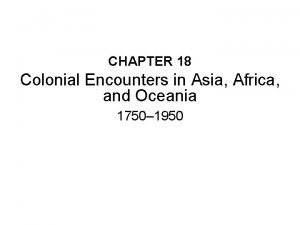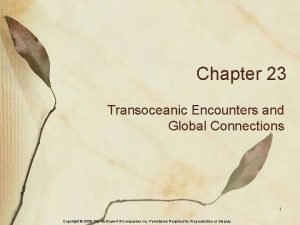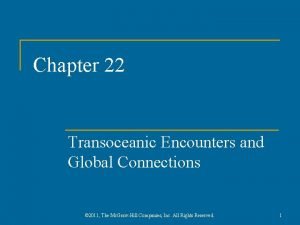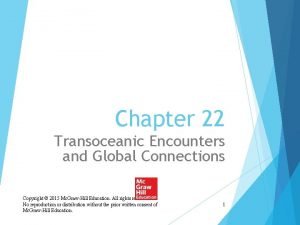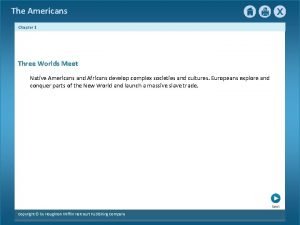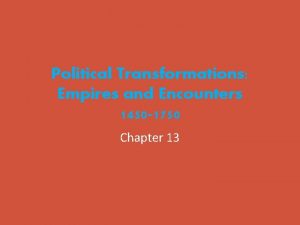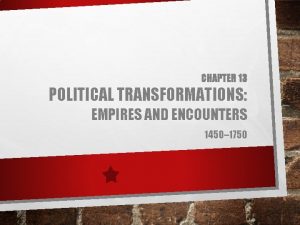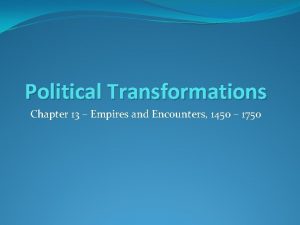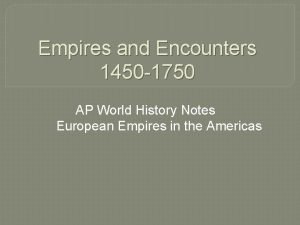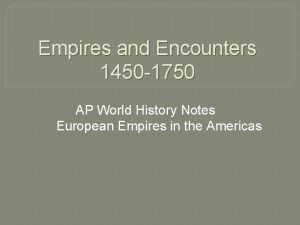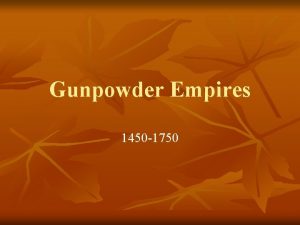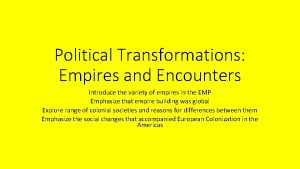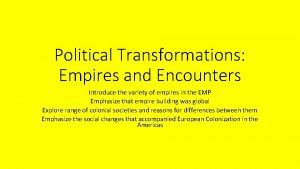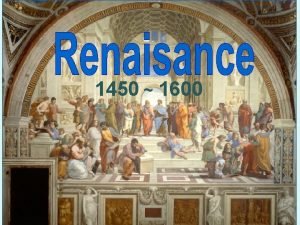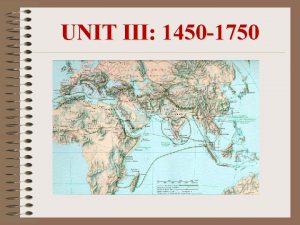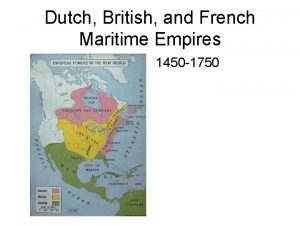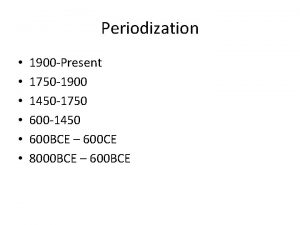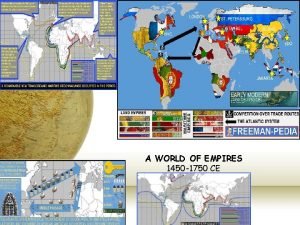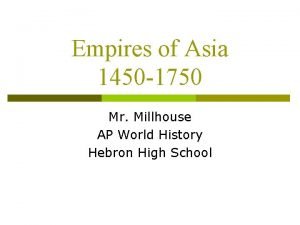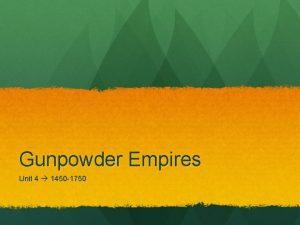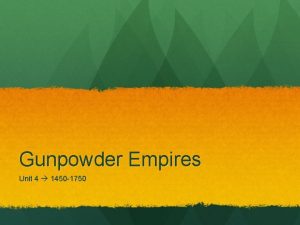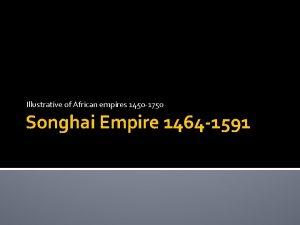Political Transformations Empires and Encounters 1450 1750 I



























- Slides: 27

Political Transformations: Empires and Encounters 1450– 1750


I. European Empires in the Americas A. The European Advantage 1. Geography 2. Need 3. Marginality 4. Rivalry 5. Merchants 6. Wealth and Status 7. Religion 8. American collaborators


I. European Empires in the Americas B. The Great Dying and the Little Ice Age 1. Demographic collapse of Native American societies 2. Pre-Columbian Population: 60 – 80 million people 3. European and African diseases 5. Coincided with Little Ice Age


I. European Empires in the Americas C. The Columbian Exchange 1. Labor shortage 2. Migrant slaves created new societies 3. American food crops 4. American stimulants 5. Exchange with the Americas 6. The Columbian Exchange


II. Comparing Colonial Societies in the Americas A. In the Lands of the Aztecs and the Incas 1. Spanish conquest, early 16 th century 2. Commercial agriculture and mining 3. Rise of a distinctive social order


II. Comparing Colonial Societies in the Americas C. Colonies of Sugar 1. Lowland Brazil and the Caribbean 2. Arabs introduced sugar production to Mediterranean 3. Sugar transformed Brazil and the Caribbean 4. Mixed-race workforce; racial systems evolved


II. Comparing Colonial Societies in the Americas D. Settler Colonies in North America 1. New colonial society 2. British settlers more numerous 3. England mostly Protestant 4. Traditions of self-government 5. North America gradually became dominant

III. The Steppes and Siberia: The Making of a Russian Empire A. Experiencing the Russian Empire 1. Conquests brought devastating epidemics 2. Pressure to convert to Christianity 3. Large-scale settlement of Russians (Siberia) 4. Discouragement of pastoralism



III. The Steppes and Siberia: The Making of a Russian Empire B. Russians and Empire 1. Imperial expansion 2. Rich agricultural lands, furs, minerals 3. Long-term Russian identity problem 4. Colonization experience different from the Americas

IV. Asian Empires A. Making China an Empire 1. Qing dynasty, 1644– 1912 2. Nomads of the north and west 3. China evolved into a Central Asian empire 4. Impoverished Central Asia



IV. Asian Empires B. Muslims and Hindus in the Mughal Empire 1. Mughals united much of India between 1526 and 1707 2. Emperor Akbar, r. 1556– 1605 3. Mughal toleration provoked reaction among some Muslims 4. Aurangzeb’s policy provoked Hindu reaction


IV. Asian Empires C. Muslims and Christians in the Ottoman Empire 1. Ottoman Empire transformed Turkish life 2. Long conflict between Sunni Ottomans and Shia Safavids, 1534 – 1639


IV. Asian Empires C. Muslims and Christians in the Ottoman Empire 3. Significant cross-cultural encounter 4. Christians in the Balkans 5. Jewish refugees – more opportunities 6. Devshirme 7. Threatened Christendom 8. Some Europeans admired Ottoman rule


 Political transformations empires and encounters
Political transformations empires and encounters Chapter 5 political transformations empires and encounters
Chapter 5 political transformations empires and encounters Land based empires 1450 to 1750
Land based empires 1450 to 1750 Russian empire 1750
Russian empire 1750 Mughal empire 1450 to 1750
Mughal empire 1450 to 1750 Fur trade ap world history
Fur trade ap world history Japan 1450-1750
Japan 1450-1750 Religion in 1450 to 1750
Religion in 1450 to 1750 Southeast asia 1450 to 1750
Southeast asia 1450 to 1750 Splitski nadbiskup 1450
Splitski nadbiskup 1450 Change analysis chart 1450 to 1750
Change analysis chart 1450 to 1750 Land based vs maritime empires
Land based vs maritime empires Expansion exploration and encounters
Expansion exploration and encounters Encounters and foundations to 1800
Encounters and foundations to 1800 Pencounters
Pencounters Foundations and encounters early american literature
Foundations and encounters early american literature Colonial encounters in asia africa and oceania
Colonial encounters in asia africa and oceania Chapter 22 transoceanic encounters and global connections
Chapter 22 transoceanic encounters and global connections Chapter 22 transoceanic encounters and global connections
Chapter 22 transoceanic encounters and global connections Chapter 18 colonial encounters in asia and africa
Chapter 18 colonial encounters in asia and africa Chapter 23 transoceanic encounters and global connections
Chapter 23 transoceanic encounters and global connections Chapter 22 transoceanic encounters and global connections
Chapter 22 transoceanic encounters and global connections Bentley and ziegler
Bentley and ziegler Chapter 22 transoceanic encounters and global connections
Chapter 22 transoceanic encounters and global connections Christ encounters
Christ encounters Different critical lenses
Different critical lenses Close encounters challenges
Close encounters challenges Chapter 1 three worlds meet answer key
Chapter 1 three worlds meet answer key
